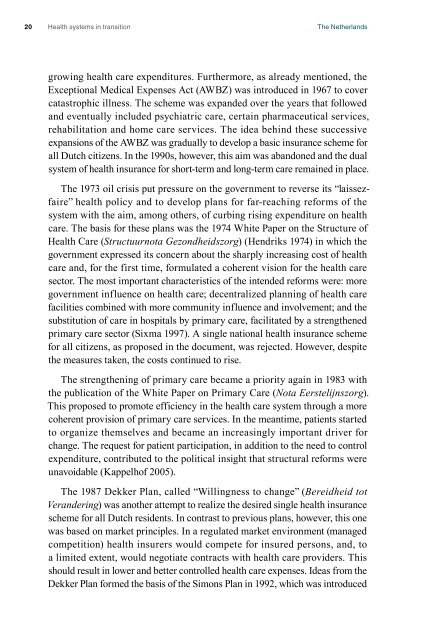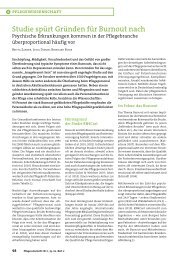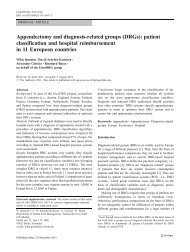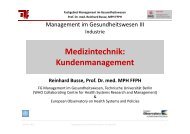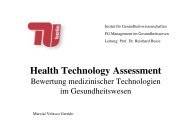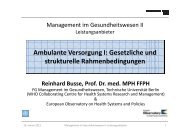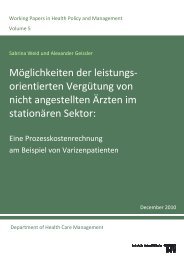The Netherlands: Health System Review 2010
The Netherlands: Health System Review 2010
The Netherlands: Health System Review 2010
Create successful ePaper yourself
Turn your PDF publications into a flip-book with our unique Google optimized e-Paper software.
20<br />
<strong>Health</strong> systems in transition <strong>The</strong> <strong>Netherlands</strong><br />
growing health care expenditures. Furthermore, as already mentioned, the<br />
Exceptional Medical Expenses Act (AWBZ) was introduced in 1967 to cover<br />
catastrophic illness. <strong>The</strong> scheme was expanded over the years that followed<br />
and eventually included psychiatric care, certain pharmaceutical services,<br />
rehabilitation and home care services. <strong>The</strong> idea behind these successive<br />
expansions of the AWBZ was gradually to develop a basic insurance scheme for<br />
all Dutch citizens. In the 1990s, however, this aim was abandoned and the dual<br />
system of health insurance for short-term and long-term care remained in place.<br />
<strong>The</strong> 1973 oil crisis put pressure on the government to reverse its “laissezfaire”<br />
health policy and to develop plans for far-reaching reforms of the<br />
system with the aim, among others, of curbing rising expenditure on health<br />
care. <strong>The</strong> basis for these plans was the 1974 White Paper on the Structure of<br />
<strong>Health</strong> Care (Structuurnota Gezondheidszorg) (Hendriks 1974) in which the<br />
government expressed its concern about the sharply increasing cost of health<br />
care and, for the first time, formulated a coherent vision for the health care<br />
sector. <strong>The</strong> most important characteristics of the intended reforms were: more<br />
government influence on health care; decentralized planning of health care<br />
facilities combined with more community influence and involvement; and the<br />
substitution of care in hospitals by primary care, facilitated by a strengthened<br />
primary care sector (Sixma 1997). A single national health insurance scheme<br />
for all citizens, as proposed in the document, was rejected. However, despite<br />
the measures taken, the costs continued to rise.<br />
<strong>The</strong> strengthening of primary care became a priority again in 1983 with<br />
the publication of the White Paper on Primary Care (Nota Eerstelijnszorg).<br />
This proposed to promote efficiency in the health care system through a more<br />
coherent provision of primary care services. In the meantime, patients started<br />
to organize themselves and became an increasingly important driver for<br />
change. <strong>The</strong> request for patient participation, in addition to the need to control<br />
expenditure, contributed to the political insight that structural reforms were<br />
unavoidable (Kappelhof 2005).<br />
<strong>The</strong> 1987 Dekker Plan, called “Willingness to change” (Bereidheid tot<br />
Verandering) was another attempt to realize the desired single health insurance<br />
scheme for all Dutch residents. In contrast to previous plans, however, this one<br />
was based on market principles. In a regulated market environment (managed<br />
competition) health insurers would compete for insured persons, and, to<br />
a limited extent, would negotiate contracts with health care providers. This<br />
should result in lower and better controlled health care expenses. Ideas from the<br />
Dekker Plan formed the basis of the Simons Plan in 1992, which was introduced


